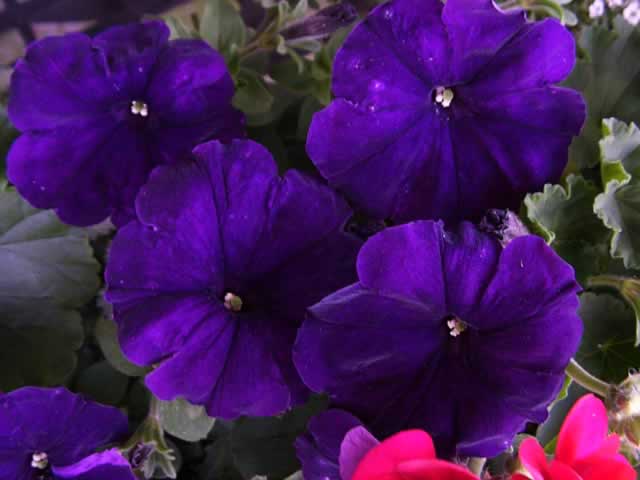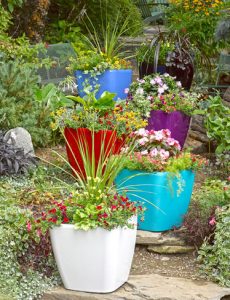
One week, I had a pot of purple petunias sitting in the summer garden, adding a spot of bright color in a groundcover bed. Days later, it was compost. The pot had become a muddy, stinky lake with some dead stems straggling out of it.
It was a textbook case of what happens when you aren’t careful about where water goes. Poor drainage can be deadly, in the greenhouse, among houseplants, or in the garden.
What went wrong with my petunias? I planted them in high-quality, well-drained potting mix. I made sure the pot had a nice big drainage hole.
But then I set the container out in the garden on my heavy clay soil. The clay sealed that hole as tight as a cork. A good thunderstorm filled the pot with water. Petunias are not water plants, and as the water rose, their roots drowned and rotted.
I’m aware of the danger of poor drainage and I do think about clearance for my containers. Some of my outdoor pots sit high on ornamental plant stands. For others, I use thick sticks as pot feet to create drainage space. But after several days of rain, the weight of the petunia pot had sunk the sticks down into the mud.
Bad drainage is a hazard indoors too; it’s probably the most common cause of houseplant death. In conservatories, benches usually are made of metal mesh or perforated to make sure water can drain away. You also can set plants in waterproof trays on a bed of coarse gravel. Water that pools among the pebbles can evaporate up around the foliage, but as long as the pots sit high enough, the plants’ roots are never in water.

You likely have saucers under your houseplants. It’s essential to empty those saucers 20 minutes or so after you water; if the water stays there, the soil in the pot will stay wet and the plant roots, deprived of oxygen, will rot.
One of the most dangerous environments for a houseplant is a decorative cachepot: one of those pretty containers, often
ceramic or a basket, intended to conceal the functional plastic pot inside. The decorative plastic or foil wrapping around the pots of gift plants has the same effect.
The problem is that you can’t see how much water has collected inside the cachepot, and chances are you don’t think to check. As the water rises, your houseplant will go the way of my petunias.
Plants need water to live. But unless they’re water lilies or papyrus, they don’t actually want to live in it. I’ll be more vigilant now to make sure my plants stay high and dry.


